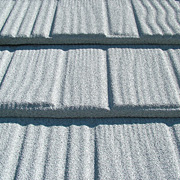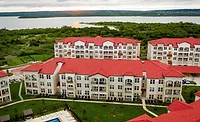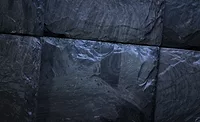Product Profile: Metal Tile

In order to qualify for this credit, the product selected had to be Energy Star-compliant and meet a minimum emissivity of 0.9 when tested in accordance with ASTM E408. As explained on www.coolmetalroofing.org, "Emissivity is a measure of the thermal emittance of a surface ... Values range between 0 and 1. Emissivity may be thought of as the ability of a material to emit heat (via infrared radiation) to the surrounding atmosphere. Higher numbers indicate faster heat transfer. "
With the hot Hawaiian sun, a high emissivity result of 0.9 was exactly what Obayashi Design needed when it was time to replace the original brown clay tile roof of the Palolo Chinese Home. Obayashi chose DECRA metal tile in Mist Grey to meet these requirements while maintaining the original architectural style of the roof.
The Mist Grey color also meets and exceeds the initial solar reflectance required to be Energy Star rated-greater than or equal to 0.25 when tested in accordance with ASTM E903. Solar reflectance is the amount of solar radiation that is reflected away from the surface while as noted earlier emissivity refers to the material's ability to shed heat.
Just as crucial to the design team as the energy performance was the overall performance. DECRA Tile can be used in re-roof and new construction applications. The systems are not only strong but weigh a mere 1 1/2 pounds per square foot installed. They feature steel substrates that are coated with acrylic stone chips which create a long lasting and attractive exterior. With impact resistance (Class 4), fire resistance (Class A) and the ability to withstand winds up to 120 mph (Dade County approved), DECRA Tile can withstand the Hawaiian elements and storms. In addition, the metal roofing tile is supported by a 50-year limited warranty.
As an Energy Star Partner and member of the U.S. Green Building Council, DECRA is committed to sustainable building and has been active in the emerging energy proposals including the new requirements of California's Title 24. Both DECRA Tile and DECRA Shake are available in the Mist Grey color, which can earn one LEED point for Site Selection Credit 7.2-Heat Island Effect. Any of the DECRA products, in any color, can be used to attain LEED points in Water Efficiency, credits 1.1 and 1.2 when used with a captured rain system, and Material & Resources, credits 4.1 and 4.2 because of the recycled content of the steel. Other points are also available in Materials & Resources, and in Innovation & Design depending on the project.
With the LEED point possibilities in hand the only remaining challenge on the Palolo Chinese Home project was obtaining the surrounding neighbors' approval of the lighter color since the original roof was a brown clay tile. "Initially, there was considerable neighborhood opposition to installing the light colored surface from an aesthetic perspective. But, we were able to convince them to allow it," explains Cara Taverna with Ensar Group, consultant for the LEED certification process.
Looking for a reprint of this article?
From high-res PDFs to custom plaques, order your copy today!





